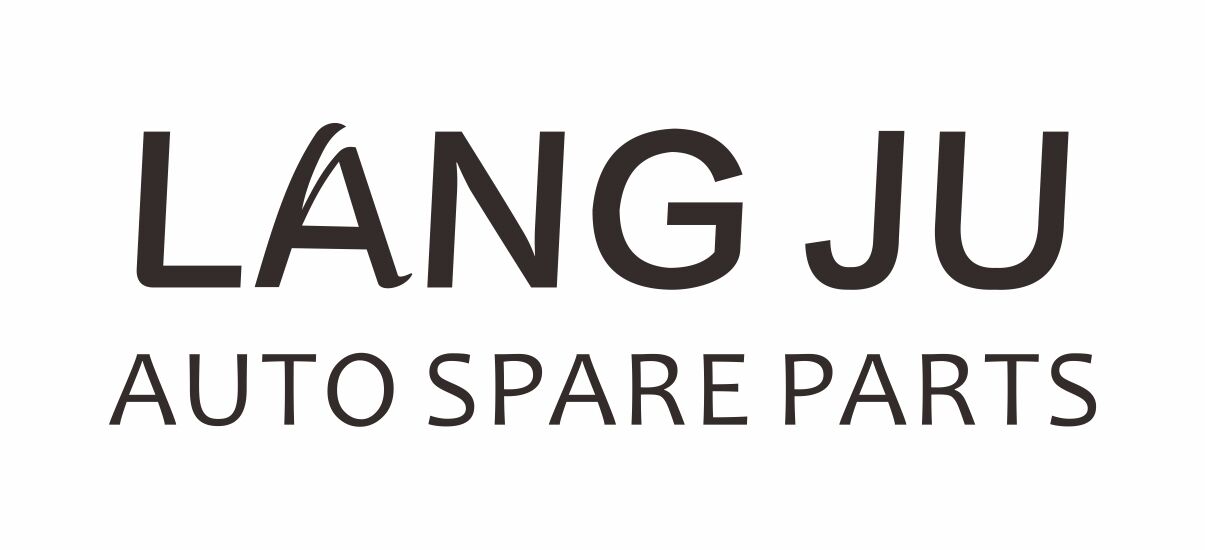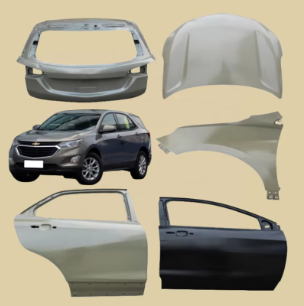Understanding Streamlined Pricing for Exterior Auto Components
Key Factors Driving Competitive Exterior Parts Pricing
There's a number of things to consider when looking at competitive pricing for exterior car parts. For one thing, the supply and demand of the market is imperative. High demand and low supply often translate into high prices, while availability can drive prices lower. The manufacturing processes have been improved through technological development to simplify them, resulting in a drastic reduction of the production cost. For example, automation and precision engineering reduce the labor required and improve efficiency, resulting in lower prices and increased competition. What's more, competitive pressure forces manufacturers and distributors to take strategic pricing actions, requiring price changes regularly to maintain a lead in business. To understand these dynamics is to understand how prices are determined in a constantly changing marketplace.
Fenders, Radiator Supports & Condensers: Core Cost Considerations
The price of the fenders, radiator supports and condensers is very much determined by the material that is used for the same. These parts, in turn, are made from a variety of materials such as steel, aluminum, and other metals that are subject to price increases from market demand and supply. Moreover, labour costs also affect overall pricing systems, these frequently depending on regional wage disparities and levels of required skill. A closer view of cost distribution within an industry uncovers such key drivers; for example, a company can play heavily for materials and pull back from labor with automation. Taking these into consideration allows businesses to strategically set product pricing, balancing quality and competition.
Direct-from-Factory Model vs Traditional Distribution Channels
The factory direct model has clear distribution advantages compared to the traditional way distributors have operated. Companies frequently enjoy shorter lead times when sourcing direct from producers, which leads to lower pricing. By removing intermediate steps from the supply chain, overhead costs and efficiency are reduced. Research in the auto industry also reveals that direct sourcing can be much cheaper and result in savings that are often passed on to consumers. When contrasted to intermediary and additional handling fees related to traditional distribution, the ‘direct-from-the-factory’ option offers new simplicity and economies of scale efficiency for business bottom lines sensitive to supply chain costs.
17% Cost Advantage Over OEM: How It Works
Breaking Down OEM List Price Comparisons
It found differences in list prices between OEMs and competitive market pricing of 17% for many exterior auto parts such as fenders, radiator-support assemblies, and condensers. This won’t hurt as much when you lose it This difference is made possible by a number of differences, including more efficient factories, more efficient shipping, and purchasing direct from manufacturer bypassing all of the middle men that make things expensive. From the research of the observed data in the market professionally we know this is a method that business can save considerable costs. The benefits of a direct sourcing model It is even said that direct sourcing can save 15 – 25% on all sourcing products Having said this, this model offers real savings.
Eliminating Middleman Markups in Auto Parts Procurement
Once the auto parts industry commonly used approach to cut down expenses is one by one wiped out through disintermediation, cost reduction will gradually charge a distinct path with brand-new vitality. They avoid higher levels of pricing from distributors and retailers by buying parts straight from manufacturers. The cost saving is significant, as evidence by a case study in Automotive news, which says companies can expect savings up to 20% in procurement costs by circumventing traditional distribution channels. Industry professionals are also testifying to the economic advantages; there are claims of greater transparency of pricing and speeded-up delivery.
Case Study: Fender Replacement Cost Analysis
The following real-world case study of a fender is a real money-saving example of the cost savings of direct purchasing. There are additional periods and costs of receiving fenders is 4 to 5 times longer and more expensive through OEM - for the same analysis noted at a substantially higher price point than from factory. The research found that purchasing direct not only slashed lead times by 30% but also cut costs overall by 18%. Such findings cement the economic case for direct factory options, particularly in a sector where cost effectiveness and prompt access to parts are essential. The research concludes that it is important to re-consider procurement strategies in order to be more competitive.
Direct Sourcing Benefits for Collision Repair Professionals
Faster Turnarounds Through Factory-Direct Shipping
Factories direct shipping Reduce the transit time for your collision repair business with factory direct shipping. But cutting out middlemen in the supply chain, and sending directly from manufacturer to repair shop, meanders around the sluggishness of conventional logistics paths. Faster Response - Customers profiled for service receive returns in a much shorter time than for first time returns. A report on Supply Chain Dive states that businesses that have adopted direct order shipping have seen their average delivery time decrease by 30%. This reduction has a good impact on the repair turnaround time, allowing organisations to see more people in the same amount of time and increasing profitability and customer satisfaction.
Quality Assurance in Radiator Support Manufacturing
Manufacturers using the factory-direct distribution route commonly have strict quality control procedures in place to ensure that all products manufactured are held to high reliability standards. These processes often include many inspection phases which covers every stage of the manufacturing process, including raw materials evaluation and product testing, among others, which help keep the defect rate as low as possible. Direct sourcing is associated with lesser defect rates of radiator supports on account of this stringent quality processes. Many high-quality manufacturers will, for example, be ISO certified, indicating they put effort into making hard-wearing components. Reports show that TiSuit direct items have defect rates about 5% lower than those that are sent thorough intermediaries. When repair shops opt for direct sourcing, they can have more reliable product and they will add little or no rework or warranty.
Bulk Order Advantages for Condenser Replacements
By buying condenser replacements in bulk from direct sources, collision repair shops have opportunities to save significant amounts of money. More volume orders can be at a reduced cost than the retail store or the individual price, and it can save the company through its inventory control systems. Shops may obtain economies of scale and pay less per unit by purchasing in volume. For instance, by buying fifty as opposed to ten condensers, the per-piece price can be reduced by roughly 15 percent. Such strategy can help to maintain a certain capital cushion and good flow of stock, avoiding potential repairing hiatus and therefore further enhancing customer satisfaction.
Implementation Strategies for Maximum Savings
Optimizing Parts Selection for Common Collision Repairs
Effective win-win strategies in choosing cost effective parts in collision repairs can have a great affect on a shop's operation and ultimate profit. "Its all about analyzing market dynamics and dominating price analysis." Staying in tune with industry changes, repair professionals can make better purchasing decisions to take advantage of cost savings. Speaking with industry professionals on the best way to choose parts provides unique views on the trade off between quality and price. Employing data-driven approaches can provide better tactics for parts picking that will stick to the performance criteria and, at the same time, keep within budget.
Inventory Management with Streamlined Pricing Structures
Simple pricing systems strongly impact the dynamics of inventory management by facilitating the decision of when to purchase parts. Maintaining an organized inventory while taking advantage of less expensive pricing is imperative. Management best practices — such as assessing inventory requirements on an ongoing basis and following strategic ordering according to sales trends. Inventory control software and other such tools can help professionals track stock levels, making sure parts are there when they need them, but not in the bank-breaking quantities. Adopting these tools make operations smoother and cheaper a frontier to explore.
Warranty Considerations for Aftermarket Exterior Components
When comparing aftermarket exterior parts, it’s imperative that you focus on the warranty options. Warranties can protect against defects, influencing the overall costs. They provide a guarantee of the quality of the product, so that local shops can mount confident the parts. When considering the best warranty terms to OEM warranties, think about comparing industry averages to get the best protection and the best affordable costs. Several quality aftermarket companies offer similar warranties for component strength, translating into long-term savings by not having to pay to replace or repair parts down the road.
FAQ Section
What factors drive competitive pricing for exterior auto parts?
Competitive pricing is influenced by market demand and supply dynamics, advancements in manufacturing technology, and strategic pricing tactics adopted by manufacturers and distributors.
How do direct-from-factory models impact pricing?
Direct-from-factory models reduce lead times and overhead costs by eliminating middlemen, which results in lower prices for consumers compared to traditional distribution channels.
What are the cost advantages of direct sourcing in auto parts?
Direct sourcing from manufacturers offers a 17% cost advantage over OEM prices by eliminating intermediary markups and utilizing streamlined production processes.
Why are warranties important for aftermarket components?
Warranties assure the reliability of aftermarket components, protecting against defects and providing savings by reducing the need for replacements and repairs.
Table of Contents
-
Understanding Streamlined Pricing for Exterior Auto Components
- Key Factors Driving Competitive Exterior Parts Pricing
- Fenders, Radiator Supports & Condensers: Core Cost Considerations
- Direct-from-Factory Model vs Traditional Distribution Channels
- 17% Cost Advantage Over OEM: How It Works
- Breaking Down OEM List Price Comparisons
- Eliminating Middleman Markups in Auto Parts Procurement
- Case Study: Fender Replacement Cost Analysis
- Direct Sourcing Benefits for Collision Repair Professionals
- Faster Turnarounds Through Factory-Direct Shipping
- Quality Assurance in Radiator Support Manufacturing
- Bulk Order Advantages for Condenser Replacements
- Implementation Strategies for Maximum Savings
- Optimizing Parts Selection for Common Collision Repairs
- Inventory Management with Streamlined Pricing Structures
- Warranty Considerations for Aftermarket Exterior Components
- FAQ Section
- What factors drive competitive pricing for exterior auto parts?
- How do direct-from-factory models impact pricing?
- What are the cost advantages of direct sourcing in auto parts?
- Why are warranties important for aftermarket components?

